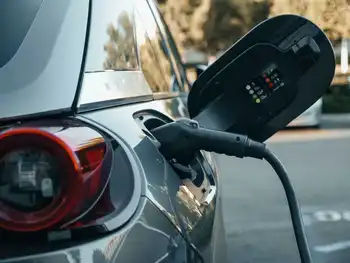Study: Saving energy could aid Appalachian economy
"The Appalachian region faces daunting energy challenges and opportunities," said the 233-page report released titled "Energy Efficiency in Appalachia: How much more is available, at what cost and by when?"
Unless bold steps are taken, the report predicts a 28 percent rise in energy consumption by 2030 for the 23.6 million residents of the Appalachian region, which stretches from Mississippi to New York. That consumption rise compares to a national increase of 19 percent.
Meeting that kind of demand will require 40 new coal-fired electric power plants and 182 million barrels of oil, according to the report, prepared by the Southeast Energy Efficiency Alliance.
If the states respond with an array of energy saving suggestions — from tougher building codes to incentives to retrofit old heating and cooling systems — they collectively could cut energy consumption by 24 percent by 2030. That means they would actually use less energy in 2030 than in 2006.
The path to energy efficiency also could lead to sharp employment gains, from 16,231 net new jobs in 2010 to 77,378 jobs in 2030, the report predicts.
At first these would be in the expected areas — more architects and engineers and construction workers to build more efficient buildings and more inspectors to inspect them.
Later job gains could be throughout the economy as consumers in a region still considered economically depressed use their savings on utility bills for other purposes, such as food and clothing. The annual savings could reach more than $27 billion by 2030, the report said.
"To see it in black and white is very significant," said Anne Pope, federal co-chairman of the commission, a bipartisan group created by Congress in 1965 to help the Appalachian states improve their economies.
Pope noted the commission already has begun offering programs linked to energy efficiency — grants programs focusing on energy savings in K-12 schools and energy efficiency certification programs for building trades in post-secondary schools.
Report co-author Marilyn Brown, a Georgia Tech professor and visiting scientist at Oak Ridge National Laboratory, said national economic stimulus funding could offer more opportunities, saying real change will require "money, incentives and regulation."
Talking about the problem alone "is not strong enough." Neither is expecting car makers and the utility industry to take energy efficiency steps on their own. "They say we can't make such radical shifts so fast. Well, it is just a matter of having the will," Brown said.
The report cited one study that found Appalachian residents would need to see electricity bills double before they will make significant reductions in consumption — due in part to the region's relatively cheap electricity from its abundance of coal. "Strong policy interventions will be needed," the report said.
Brown said one place to start is urging each state to adopt the latest energy efficiency building codes. According to the study, Georgia, Kentucky, Maryland, Ohio and Pennsylvania are the most current among the states, all using a 2006 standard. By comparison, Tennessee has just adopted a 1998 standard.
"I define energy efficiency as the productive investments in the energy we don't use to produce goods and services," said co-author John "Skip" Laitner with the American Council for an Energy Efficient Economy.
"It's an invisible quantity that is hard to realize, hard to see, compared to say a power plant or a transmission line or a pipeline. That is part of why we set out to do this study, to try to figure out ways to bring it forward as an economic development opportunity for the Appalachian region."
The Appalachian region encompasses 205,000 square miles following the spine of the Appalachian Mountains. The region has 410 counties in 13 states, including all of West Virginia and parts of Alabama, Georgia, Kentucky, Maryland, Mississippi, New York, North Carolina, Ohio, Pennsylvania, South Carolina, Tennessee and Virginia.
Related News

New rules give British households right to sell solar power back to energy firms
LONDON - Britain’s biggest energy companies will have to buy renewable energy from their own customers under new laws to be introduced this week.
Homeowners who install new rooftop solar panels from 1 January 2020 will be able to lower their bills by selling the energy they do not need to their supplier.
A record was set at noon on a Friday in May 2017, when solar energy supplied around a quarter of the UK’s electricity. However, solar panel owners are not always at home on sunny days to reap the benefit. The new rules will allow them to make…




